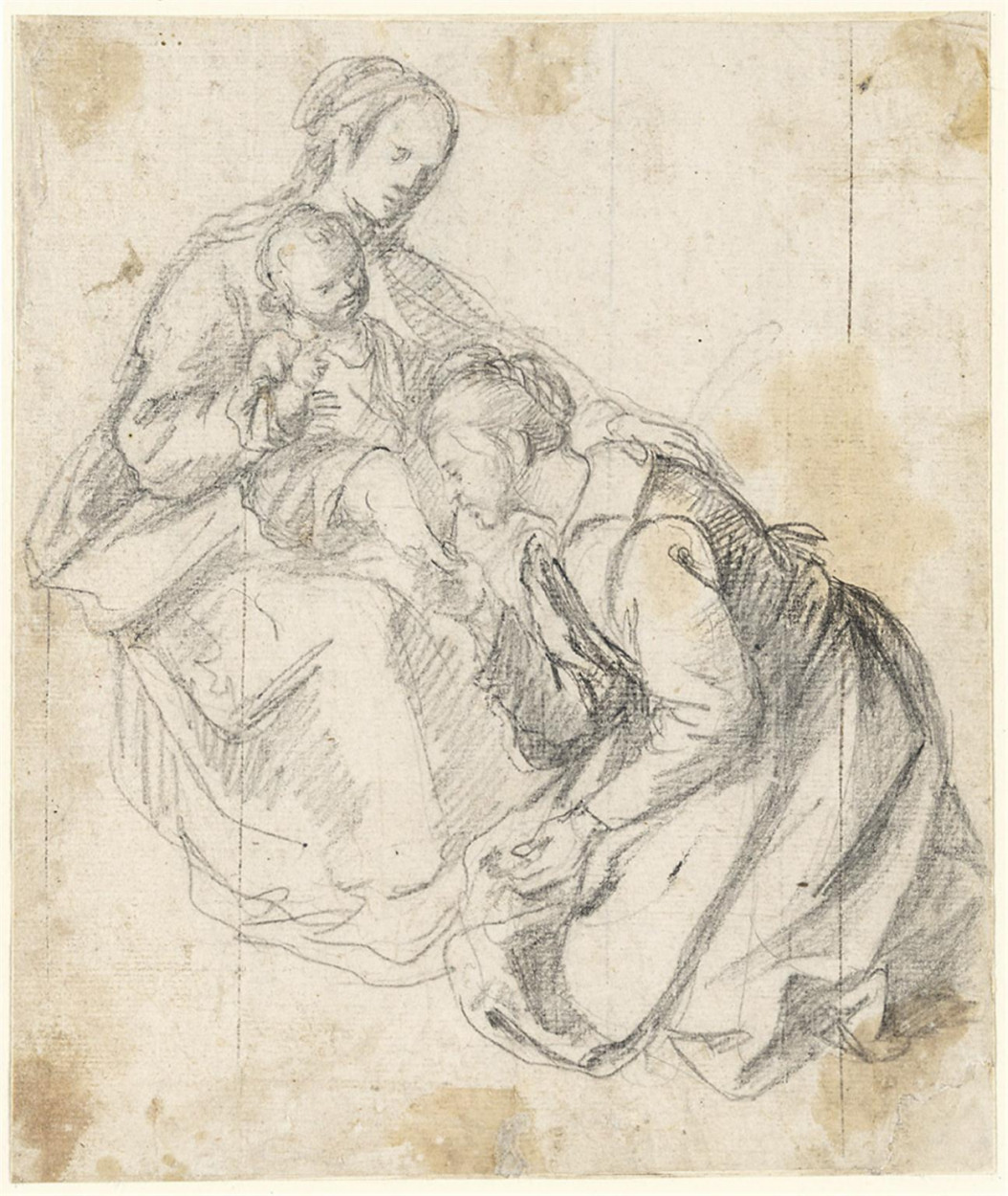
Francisco de Zurbarán, Umkreis, Zeichner
Alonso Cano, ehemals zugeschrieben, Zeichner
Die mystische Verlobung der Hl. Katharina, frühes 17. Jahrhundert
Saint Catherine of Alexandria kneels at the feet of the Virgin and Child and takes the infant's foot in order to kiss it. He blesses her with his right hand and pats her tenderly on the head with his left. The Virgin, meanwhile, reaches out to touch the saint's shoulder. The three figures are skillfully integrated with one another, and the resulting composition is compact and elegant. The sheet shows different levels of completion, with the figure of the saint having been worked up more than the other two. This is especially apparent in the rather beautiful head with the finely rendered details of her plaited hair and her eye, and in the more contrasted shading of her draperies. The Virgin and Child are more lightly drawn, and the contours of the former-especially of her left shoulder and arm-are unresolved. On the verso (recently revealed) is part of the composition, almost identical, drawn in a more summary manner, probably an abandoned first attempt. Both sides of the sheet have vertical “guidelines” drawn on them, at least one on each recto and verso intersecting the composition at the same place, just to the left of the Christ Child.
The drawing was traditionally attributed to Alonso Cano, but Harold Wethey rejected that theory in 1952, and in the Hamburg Spanish drawings catalogue (Stubbe (dir.) 1966) it was described as “Anonymous, Seville (?), seventeenth century.” In 1980 and again in the Corpus volume of 1985, Alfonso Pérez Sánchez listed it under Francisco de Zurbarán, pointing out that the "overall treatment and the figure types have close affinities with Zurbarán's work, although we possess no firmly attributed drawings which allow us to consider this particular one autograph. Pérez Sánchez did not specify whether he thought it was by the same hand as the homogenous group of drapery studies (inv. nos. 38638, 38645, 38644, 38639, 38642, 38641, 38646, 38643, and 38647, cat. nos.180-88), but this is likely. One can observe such common character traits as the constant uncertainty in the redaction of the outlines, the use of a vigorous and somewhat inexpressive hatching manner, and a similar shorthand in the definition of details, for example, the noses.
That said, the reason why this drawing seems a cut above in terms of its aesthetic quality is almost certainly because it is a copy of an existing model, a print, or possibly another drawing. The repetition of the composition on both sides of the sheet and the existence of the “guidelines” lend to this hypothesis. The model has not been identified, but from the character of the composition, the dress, and the figure types, it could well be Tuscan, close to works by, for example, Jacopo da Empoli (1551-1640).
Incidentally, no painting of this subject by Zurbarán was known until one came to light very recently (Delenda 2011). It is almost certainly that which is mentioned in the inventory of the artist's goods that was drawn up at his death. However, the composition is very different than that of this drawing.
Gabriele Finaldi
